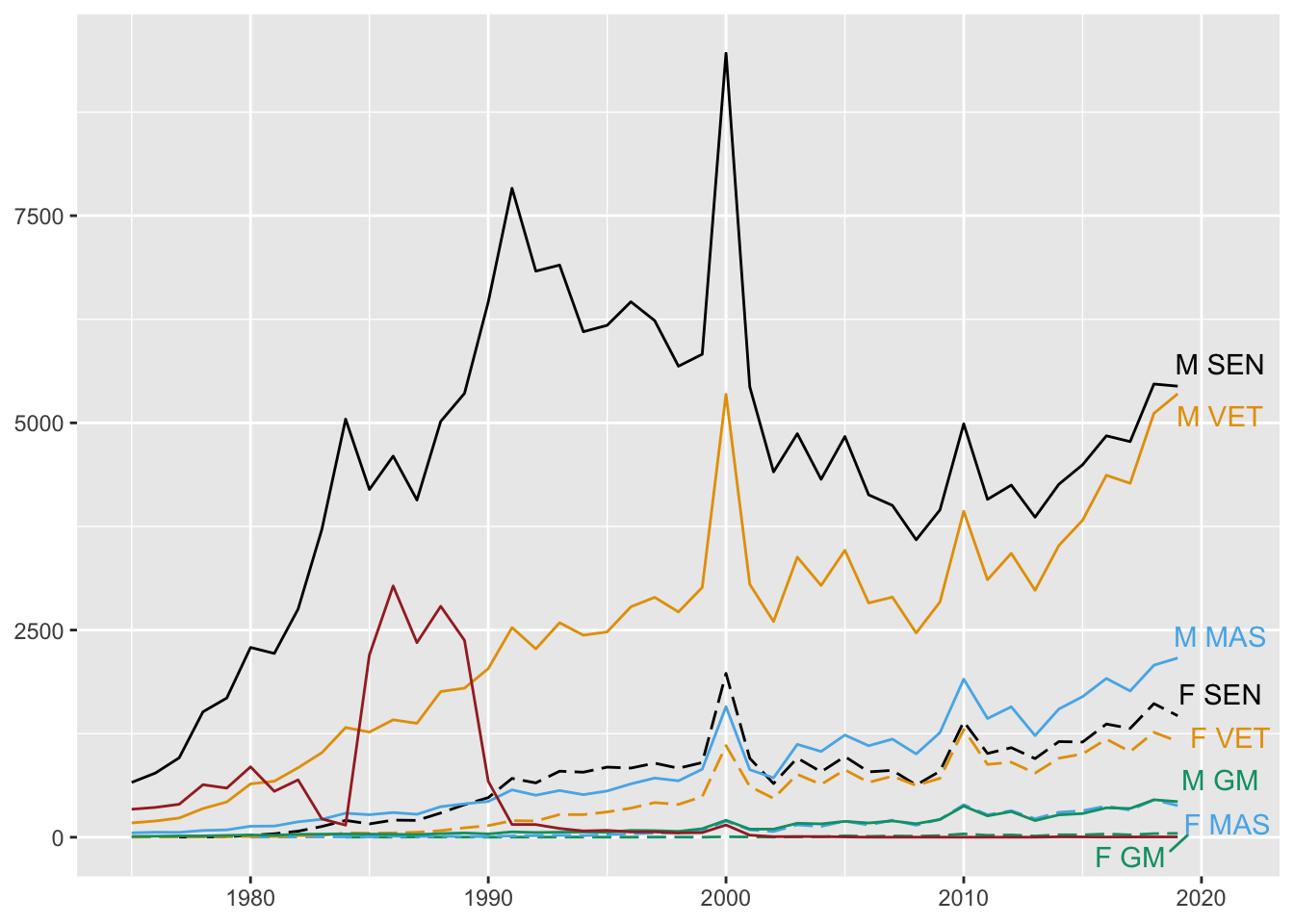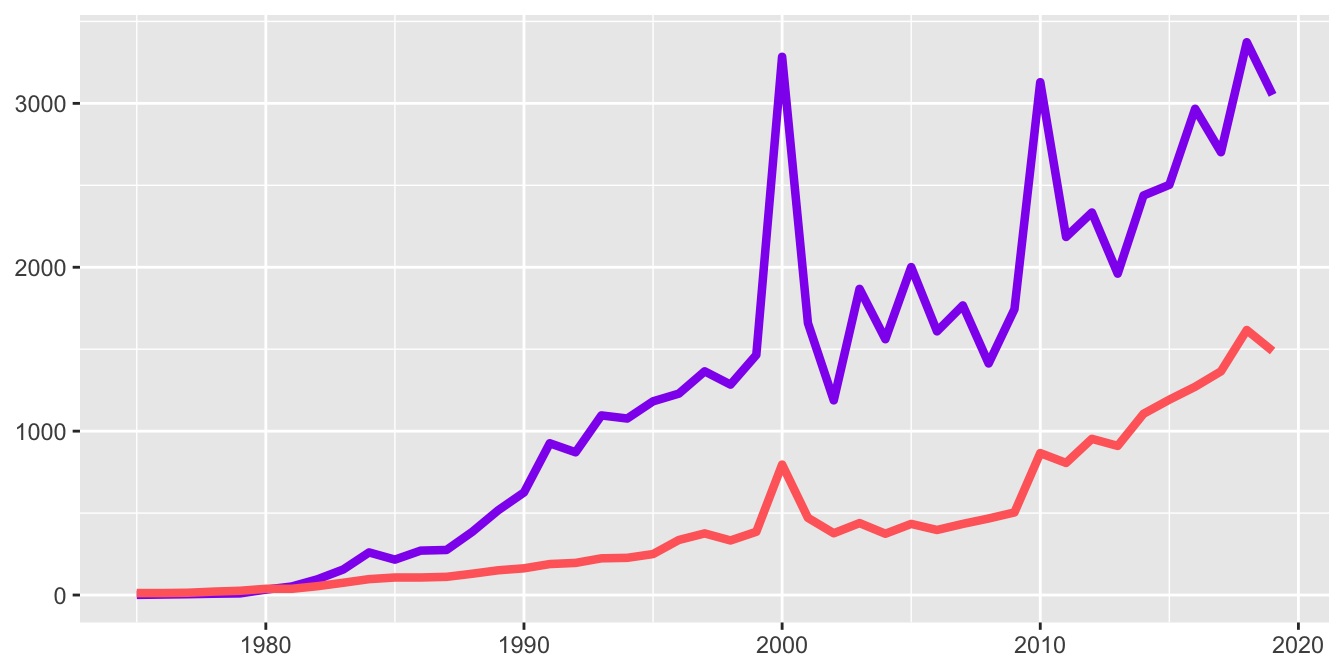21.2 Numbers by age and sex
The race was originally only open to white males. In 1975 both women and blacks were allowed to enter officially for the first time, although a woman, Frances Hayward, ran in the third race in 1923 and the first black man, Robert Mtshali, ran in 1935.
Runners have to be at least 20 to participate and are divided into separate groups by age: SENIOR (20-39), VETERANS (40-49), MASTERS (50-59), GRANDMASTERS (60+). Figure 21.2 is a plot of the numbers in each group for each sex. The four female groups are drawn with dashed lines and the four male groups with solid lines. There is an additional unlabelled brown solid line for entrants having no known birth year.

Figure 21.2: Numbers of finishers by age group and sex from 1975 to 2019 (the brown line is for those whose birthyear is not given)
The male seniors group dominated the race until 2000, apart from a few years in the 1980s when entrants with no birth years recorded could not be assigned to any age category. In recent years the number of male veterans has become larger and almost the same as the number of seniors. The other smaller groups follow a common pattern of a general increase with peaks in 2000 and 2010.
The first foreign entrants were a group of four top runners from England in 1962 (Wikipedia (2022)). All four finished in the top five with one of them, John Smith, winning the race. Figure 21.3 shows how the numbers of female and foreign finishers have developed since 1975.

Figure 21.3: Numbers of female (purple) and foreign (red) finishers since 1975
Both groups have grown in numbers over the years with the numbers of foreign finishers increasing more slowly and with less variability. The number of female finishers peaked sharply in 2000 and in 2010. A new highest number for female finishers was established in 2018.